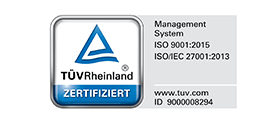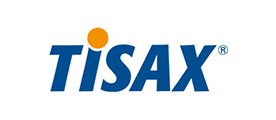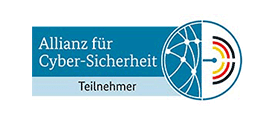Agile transformation
Your path to an agile organization
In a world characterized by volatility, uncertainty, complexity and ambiguity (VUCA), companies, organizational structures and managers are constantly facing new challenges such as pandemics, raw material shortages, energy crises, inflation and digital disruption. In this constantly changing environment, companies and organizations must remain responsive and competitive. To achieve this, flexibility, continuous change and further development as well as agile thinking and action must be anchored and practiced in various areas: Among managers and employees, at management and team level, in organizational structures and processes as well as through the methods used and principles practised. An agile transformation promotes the necessary mindset and thus lays the foundation for sustainable improvements in your company: faster value creation, greater flexibility and more innovative products.
Agile transformation with Ventum

Holistic
Transformation consulting
With our holistic approach, we advise you on agile transformation in all relevant dimensions: Culture & Leadership, Organization & Structure, Methods & Processes, Tooling & Toolchain.Our consultants work with you to shape all these dimensions and coach you individually tailored to your company and your challenges. This ranges from the introduction of agile working methods in the team to the agile transformation of complex organizational structures. We combine different thinking models and frameworks such as "learning organization", systemic thinking, emergence, Scrum, SAFe etc. with our diverse experience. Our consultants attach particular importance not only to delivering agile processes, methods and structures, but also to establishing an agile mindset among your managers and employees in order to create a successful long-term agile culture. We support you on this path with change management expertise and the appropriate workshop methods. Our aim is to lead the self-organized teams in your company to greater autonomy as they become more agile.

Customized
Agilization
As agile coaches and agile enablers, we work with you to find and develop tailor-made solutions for your organization and your current challenges. We select frameworks and methods individually according to your goals and the respective use case. Our advice always relates to the business context. When making decisions, we rely on lived experience and an empirical approach rather than theoretical principles and concepts. Another success factor is working in cross-functional teams. We proactively network with colleagues and employees from different disciplines and use our combined expertise to create the greatest possible added value for your company and your agile transformation .
Agile transformation in just a few steps
Ready
This phase serves as preparation. In particular, a common understanding of the objectives, the handover and review of the content, framework conditions and success factors already developed by stakeholders and program participants is important here. To this end, the objectives are broken down further, coordinated and the commitment of the entire program and top management is obtained.
Steady
This phase is about recording the status quo and, in a second step, the initial planning of the transformation. Specific as-is analyses (e.g. value stream analysis, capability-based planning, culture assessment) are carried out, gaps to the objectives are identified, topics are prioritized and coordinated, and the short, medium and long-term roadmaps are planned on this basis.
Go
In the go phase, we take an iterative approach in order to learn through early testing, reduce risks and thus ensure the success of the transformation. We are guided by frameworks, methods and best practices that suit your organization. The topics from the steady phase are broken down, planned and implemented.
Flow
In this phase, the main focus is on integrating the transformation program into regular operations. By this point at the latest, the organization is in a position to continue implementing the strategic roadmap independently. The transformation program is completed with the final documentation and the enablement of employees, but the transformation towards the strategic goals continues.
Your contact person

"We advise and coach you individually from the implementation of agile procedures at team level to the agile alignment of a complex organization."
– Helen Gebre, Ventum Consulting
Our partners
Core elements of agile transformation
Transforming a company into an agile organization requires a rethink of the organizational structure and management. Results and experience must serve as the basis for decisions in order to successfully shape change and increase the company’s adaptability. There are various dimensions that can be made agile, e.g. IT, culture, organization, strategy and leadership.
In order to start the agile transformation, a detailed analysis of the current situation and a clear objective are required. This forms the basis for selecting the methods and frameworks to be established in the company in order to lay the foundation for agility in the organizational structure.
Teamwork is an important part of establishing an agile culture. Team members should be able to take responsibility and reflect on experiences and mistakes in retrospective phases in order to drive continuous improvement.
In order to shape leadership according to agile principles, the focus must be on empowering employees and teams to solve problems independently and drive projects forward. In this context, the management level takes on a supporting rather than a guiding role.
Agile transformation is not a one-off project. Rather, it is a continuous improvement and adaptation process. Even organizations that have already achieved a high degree of agility and anchored it at all levels are continuously optimizing their agile practices.

Typical scenarios of agile transformation
In today’s business world, a company’s agility is crucial to its success. There is no one-size-fits-all solution that works for every company. Rather, it is about using experience and existing methods and frameworks to develop an agile organizational structure that fits your company, its challenges and goals. Consultants and coaches can make a significant contribution to the success of agile transformation in this context, as they have a wealth of experience and methodological knowledge to identify and adapt the right methods and frameworks for your company.
Typical scenarios include identifying opportunities and framework conditions for an agile approach, creating a product and company vision, drawing up a change roadmap, establishing the agile requirements process, training and coaching managers, product owners and other roles, and putting together agile teams within the organizational structure.
A scaled model can also be useful for the agile transformation of larger companies and organizations. As consultants, we validate various agile scaling frameworks and work closely with you to identify the right model for your company. Here, too, we support you in adapting the organizational structure, coaching and training managers and the corresponding new roles in the agile setup. We work with you to define process adjustments and map them with the appropriate tools.
Depending on the company environment, more specific scenarios are also conceivable. These include, for example, the refinement of agile billing models with suppliers, change coaching, the development and implementation of a customized prioritization process or the creation of a dedicated JIRA instance.
Typical scenarios of agile transformation
Frequently asked questions about agile transformation
In an agile transformation, a company or organization fundamentally changes its way of working and corporate culture in order to establish agile principles and working methods. In this context, agility refers to an organization’s ability to adapt quickly, react flexibly and continuously improve its processes, products and services.
Components of agile transformation include
- Changing the culture
- Change in working methods
- Adaptation of processes
- Training and development of employees
- Change in leadership
- Continuous improvement
Agile transformations can take place in different industries and organizations. They are often initiated in response to the need to remain competitive in a rapidly changing market environment. However, an agile transformation and thus a certain change process is also associated with challenges and requires a strong commitment from executives and management as well as careful planning and implementation.
The duration of an agile transformation can vary greatly and depends on several factors, such as the size and complexity of the organization, the existing culture and way of working, the willingness of managers and employees to change and the specific goals of the transformation. It should also be noted that every department must be involved in the change process.
Overall, the change process of an agile transformation can take anywhere from a few months to several years. It is important that the organization views the process as a long-term investment in order to reap the benefits of agility. To accelerate the transformation process, agile coaches or consultants can be brought in to contribute proven methods and experience.
Agile process models are methodical approaches for the planning, development and management of projects and tasks based on agile principles. These models emphasize flexibility, collaboration, customer orientation and continuous improvement. The best-known frameworks are probably Scrum and Kanban.
With Scrum, the focus is on regular, time-limited work phases, known as sprints, in which a functional product increment is created. The framework includes clear roles (Scrum Master, Product Owner, Development Team) and events (Sprint Planning, Daily Stand-up, Sprint Review, Sprint Retrospective).
Kanban is an agile model that focuses on visualizing the work process and limiting work in progress. Teams typically use a Kanban board to track the progress of tasks and optimize the flow of work.
Other agile frameworks include Extreme Programming (XP), Lean Software Development, Crystal, Feature-Driven Development (FDD), Dynamic Systems Development Method (DSDM) and Agile Unified Process (AUP). These frameworks are more suitable for smaller teams.
In order to align a large organization as a whole in an agile way, these frameworks must be scaled. Here, too, there are ready-made models such as SAFe (Scaled Agile Framework). There is no such thing as a “perfect” framework – rather, the selection of a suitable model depends on the specific requirements of a project or organization. Each model has its own principles, practices and tools that can be used flexibly and adapted to the needs of your company.
Scrum and agility are two terms that are often used together but have different meanings and applications. The main difference is that agile is a general philosophy or mindset, whereas Scrum is a specific method used within this agile framework.
Agility is a fundamental mindset that describes the ability of an organization or team to adapt quickly to changing requirements and circumstances. Collaboration, customer focus, flexibility and continuous improvement are promoted through agility. Agile principles are anchored in various methods and frameworks.
Scrum is one such specific framework. It is used to organize and manage complex projects or tasks. The focus is on regular, time-limited work phases, known as sprints, in which a functional product increment is created. The framework includes clear roles (Scrum Master, Product Owner, Development Team) and events (Sprint Planning, Daily Stand-up, Sprint Review, Sprint Retrospective). Scrum aims to promote transparency, control and adaptability in a team and to support continuous improvement. In addition to Scrum, there are numerous other agile methods and frameworks that can be used depending on the specific requirements and objectives of a project or team.
If an organization has certain goals and challenges that can be addressed effectively with agile methods, an agile transformation can make sense. Factors that speak in favor of an agile transformation are, for example
- Fast-moving industries
- Complex projects
- Customer orientation
- Improved collaboration
- High speed of change
- Continuous improvement
- Development of innovative products
- Employee participation
It is important to note that an agile transformation is not suitable for every organization or in every situation. It requires a careful planning process and a willingness to rethink existing working methods and cultures. Before an agile transformation, we therefore work with you to carefully evaluate your specific goals, challenges and organizational requirements to ensure that agility is the right approach.
Arrange a non-binding initial consultation now
- Strategic, professional & technical support in digital change
- Pragmatic, creative & excellent to the goal
- Methodical, professional & technological expertise



TISAX and ISO certification for the Munich office only